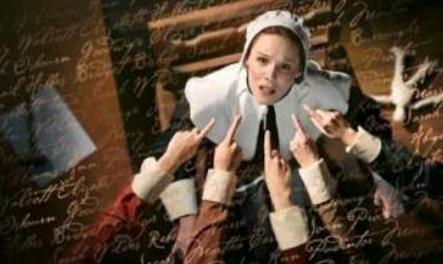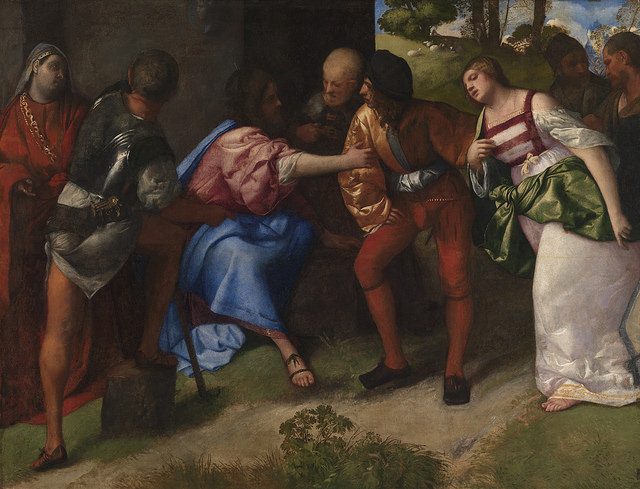
New York Times Magazine photo illustration by Andrew B Myers.
As I read the sad and disturbing article “Feed Frenzy” in Sunday’s New York Times Magazine, something stirred in the belly of my dismay. The story’s subtitle is “the unique 21st-century misery of the online shaming victim.”
Online, one reads a more blunt headline: “How one stupid tweet blew up Justine Socco’s life.” 1
No, I’ve never been victimized yet, as have the article’s subjects. But I’m interested in finally starting my own Twitter account. As I read, I began to again reconsider plunging myself into the shoot-from-the-hip mentality that dominates this social media.
At least on Facebook, you can contextualize your comments more thoroughly, so that misinterpretations like those that ruined a number of people’s lives don’t explode in their faces, often before for they realize the reactions have spread like a monstrous global cancer.
On Dec. 20, 2014, Justine Socco — in flight on a plane trip from London to South Africa before she discovered she was being globally pilloried — insensitively joked on Twitter: “Going to Africa. Hope I don’t get AIDS. Just kidding. I’m white!”
She preceeded that with sassy tweets about a “weird German” with body odor, and “bad teeth” Brits. And before snaggle-toothed Austin Powers could say “Oh, behave!” countless quickly intrepreted that, being white, Socco thought herself above AIDS — too privileged — to get it in Africa.
The author of the article, Jon Ronson, admits to his own share of online tweet shaming, and I have done some of my own but never on Twitter, and only of persons fair game as a public figures, ie. politicians like Wisconsin Governor Scott Walker. The odd defiance and hubris of someone like Walker, which even some conservatives admit about him, virtually begs for online reproach. 2
But swift judgment is contagious on social media and especially on the forced glibness of Twitter’s 144-character virtual reality. That virtual quality insulates the Tweeter who lashes out. Readers viciously pecked Socco’s personhood and her career to death (flashes of Hitchcock’s The Birds, but such tweeters displayed the crows’ same pack-attack mentality). The pain and damage to a person’s psyche and a life are quite real. Justine remains, a year later, still “wracked by PTSD, depression and insomnia,” after she lost her job as a senior director of communications at IAC (a leading online consumer service company).
Ronson recounts a few other “tweet frenzy” victims’ sad stories, and then something clicked with me when he started digging into the history of public shaming in America. He found, on microfilm in the Massachusetts Archives in Boston, an article about how, on July 15, 1742, “a woman named Abigail Gilpin, her husband at sea, had been found ‘naked in bed with one John Russell .’ They were both to be ‘ whipped at the public whipping post 20 stripes each.’ Abigail was appealing the ruling, but it wasn’t the whipping itself she wished to avoid. She was begging the judge to let her be whipped early, before the town awoke. ‘If Your Honor pleases,’‘ she wrote, ‘ take some pity on me for my dear children cannot help her unfortunate mother’s failings.”
At the time, crowds of people flocked to public shamings and continued berating with relish, just as they did in 1692-3 at the notorious witch trials and hangings in Salem, Mass. 3

A dramatization of a Salem witch trial. Courtesy www.thehorrorzine.com
Right then, it struck me again, why I had been so fascinated by the Italian painter Titian’s painting “Christ and the Adulteress,” which I had seen in person recently at the Milwaukee Art Museum and which now I have as my computer screen saver.
The painting was a centerpiece of Heaven and Earth: 500 years of Italian Painting from Glasgow Museums, now at the Santa Barbara Museum of Art, California, through May 3 under a somewhat more secular title: Botticelli, Titian and Beyond: Italian Masterpieces from the Glasgow Museums.

“Christ and the Adulteress” by Titian (Tiziano Vecellio), 1508-10. Courtesy Milwaukee Art Museum
The brilliance of Titian’s daring and evocative formal handling of his subject matter fascinated me, as I discussed in a previous Culture Currents post:https://kevernacular.com/?p=5704
Justine’s and Abigail’s stories helped me understand that this painting’s alluring and sculptural tangle of figures says even more about social matters than I had first inferred. Like Abigail, the woman in the famous Bible story appeared guilty of adultery and, with a swift judgment, the Pharisee drags her to Christ, actually with the duplicitous intention of trapping him into defying established Roman law by defending her. Working in suspicious shadows, the self-styled messiah does just that, helping seal his own fate as a dissident radical.
But the artist Titian has societal fish to fry with all those busybodies crammed into this compositional pan. You can count five other people standing nearby as the Pharisee baits Christ to become the sixth, or become a criminal himself. On the left, the man with his foot on a tree stump addressing another woman on his left while aiming the proverbial pointed finger of blame at the poor woman. The woman listening, as a credit to her gender, looks on balefully, as if questioning the quick condemnation. Titian also inserts two men in the background, explicitly to show two smirking men gabbing, clearly indulging their own clucking opinions of the woman.
The original painting actually had another man on the far right, whose knee remains still visible against the accused woman’s white skirt.
Look at the copy of the original uncut painting below. Titian probably cut the canvas because his better sense decided this large figure made the composition too busy. The self-consciously dandy he eliminated seems more interested in posing than in the dramatic moment. Nevertheless the figure further underscores Titian’s original point of how public the woman’s shaming felt to her.

Copy after Titian, “Christ and the Adulteress,” Accademia, Carrara, Bergamo. Photo of catalog reproduction by Ann Peterson.
Further most of the people don’t seem to hear Christ’s response to the Pharisee which, of course, became historic wisdom: “Let he who hath not sinned cast the first stone.”
The man on Christ’s left shoulder, perhaps the disciple Peter, seems the only one paying attention to Christ. Yet the elder man puts his hand to his chest as if taken aback by Christ’s bold defiance of the Pharisee, and of conventional moralism.
So Christ is essentially alone in this crowd taking the stance. Yet, of course, even though he speaks to defend her from a stoning, the woman must feel more alone than anyone, as her abject countenance makes utterly clear. Her head, legs and feet still recoil and resist her apparent fate while the Pharisee drags her arm and upper torso forward.
So the painting brims with politics at several different levels — the “gotcha” entrapment of Christ himself in defying the law, and of the caught-in-the-act woman. And Titian highlights the naked self-righteousness of political correctness even as he hides the hero’s face in the shadows. Christ clearly dwells in a different realm of spirit, understanding and insight.
Now Titian’s painting and Christ’s message seem more timely than ever. We see a mere handful of people indulging in the latest gossip. On Twitter, literally millions can quickly pounce on such an admittedly insensitive tweeter like Justine. Her life quickly crumbles into a shambles.
Sam Biddle, then the editor of Valleywag, Gawker Media’s tech-industry blog, re-tweeted Socco’s post to his 15,000 followers and posted on Valleywag. He says he would do it again and that ”she’d be fine eventually, if not already.”
Socco is far from “fine.” Most of us know at least something about depression, insomnia and unemployment. Poorer understood is post-traumatic stress disorder, and it’s far more common than people think. We hear a lot about soldiers suffering from it, but I know at least one friend who has suffered with the diagnosis for years after her boss repeatedly abused her. She eventually lost her job, in a staff downsizing.
Ronson’s article and this painting help me to understand my friend’s situation, even though she was hardly guilty of anything — rather she courageously stood up repeatedly to a bully boss.
So I think I’ll probably think once yet again about whether I’ll enter the still-strange-to-me-me Twitter world even though — as the insightful, recently deceased New York Times media writer David Carr noted — Twitter is good discipline for a writer to boil down his statements. But I strive to do that on Facebook because I know most people scroll and read quickly.
And as the article points out ironically, Sacco’s “tormentors were instantly congratulated as they took (her) down, bit by bit, and so they continued to do so. Their motivation was much the same as Sacco’s own– a bid for the attention of strangers — as she milled about Heathrow (Airport), hoping to amuse people she couldn’t see.”
In the article, Justine argues that her joke didn’t signify her reveling in white privilege. Rather she was making fun of how “living in America puts us in a bit of a bubble when it comes to what is going on in the Third World. I was making fun of that bubble.”
Biddle eventually apologized to Socco. Her story, and the story Titian tell us in his painting, show how we still have much to learn from very old history, and from old art, and from both great leaders and the anonymous players — like the unnamed adulteress woman — who suffer in their tortured symbolism. Today “smart” phone photo images of her might saturate the Internet, smeared in electronic shame.
Would that the “fallen” Biblical woman, like Justine Socco, live on as a symbol of a flawed person whom the great humanist Christ valued — beyond her real or perceived “sins” — for struggling along life’s up-and-down path. Most wise storytellers or artists give their protagonist a fighting chance at redemption, before a mob-rule sentence is passed. Why not tweeters, too?
___________
1 http://www.nytimes.com/2015/02/15/magazine/how-one-stupid-tweet-ruined-justine-saccos-life.html?_r=0
2. The nation’s most polarizing state governor continues to get mostly roses thrown at his feet by national and even local media, surprised by the Teflon quality he shares — so far — with his innocuous rhetorical role model Ronald Reagan. Yet Walker continues frequent ideological overstepping, trampling not only on the roses but the pursuit of education and knowledge and social equality, among other worthy goals.
3. No women were burned at the stake in Salem. They were hanged or jailed. The myth derives likely from European witch trials, where execution by fire was disturbingly common. The Holy Roman Empire’s medieval code “Constitutio Criminalis Carolina” stipulated that witchcraft should be punished by fire, and church leaders and local governments oversaw the burning of witches in parts of modern day Germany, Italy, Scotland, France and Scandinavia. Historians estimate that the witch-hunt hysteria that peaked between the 15th and 18th centuries saw some 50,000 people executed as witches in Europe. http://www.history.com/news/ask-history/were-witches-burned-at-the-stake-during-the-salem-witch-trials
The image of the larger uncut version of the Titian painting is actually a painting done “after Titian” by staff Academia Carrara, in Bergamo, Italy.

